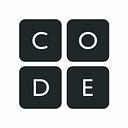I’m a Maker! Bring computer science to life with physical computing
Explore our new standalone unit, professional learning, and resources from micro:bit.
Within computer science, maker education takes STEM (Science, Technology, Engineering, Mathematics) a step further by inviting hands-on experience and collaboration into the classroom to help teach problem solving and critical thinking. Makers can invent, explore, innovate, and create using technology like circuit boards, robotics, 3D printing, programming, and more. Code.org has previously incorporated maker education into our CS Discoveries curriculum, but we’re now proud to provide offerings for a variety of classrooms on our new I’m a Maker page!
New unit: Creating Apps with Devices
Code.org is thrilled to announce that the popular physical computing unit from our Computer Science Discoveries curriculum is now available as a stand-alone unit fit for grades 6–12.
In Creating Apps with Devices, students will use App Lab and either Adafruit’s Circuit Playground or the BBC micro:bit to develop programs that utilize the same hardware inputs and outputs that you see in smart devices, looking at how a simple prototype can lead to a finished product. Then, students will explore how physical devices can be used to react to the world around them using a maker mindset to create prototypes with everyday materials.
By the end of the unit, students will be able to create an app that controls a device, similar to many smart hardware they may experience in their day-to-day lives. They’ll also have created an interactive art project and developed a prototype for a physical device that solves a problem.
This unit is connected to Code.org’s App Lab, so you can use all of your favorite App Lab features (like databases and graphics) with the physical computing device. When combined with the sensors and inputs on their devices, this allows students to make realistic apps that react to their physical environment.
Professional learning now available
We are also proud to offer a self-paced professional learning course for teachers interested in using this new unit, whether with the Circuit Playground or the BBC micro:bit. During the 100-minute online module, participants will:
- Learn about Code.org’s mission and platform
- Get an introduction to physical computing
- Practice key concepts included in the unit
- Explore lessons plans and projects as well as teacher resources
Micro:bit resources for CS Fundamentals
Inspired by our shared goals of improving digital literacy and empowering computer science educators in schools, Code.org has partnered with the Micro:bit Educational Foundation to offer teachers several resources on using the BBC micro:bit device as an extension to our CS Fundamentals curriculum. There are more than 7 million micro:bit programmable devices already in use around the world.
Each set of these new CSF lesson guides shows how to use physical computing to build on what students are learning in CSF and to deepen their conceptual understanding by taking code off the screen and into their hands.
“Physical computing is a great way to engage students in computer science, and I’m excited that Code.org is expanding its offerings in this maker education space,” says Code.org CEO Hadi Partovi. “We’re delighted to partner with micro:bit to provide physical computing extensions to our existing courses.”
With these resources — including booklets, videos, posters, and more — it will be easier than ever for classrooms to utilise the micro:bit, which combines hardware and software to help students build 21st century skills and confidence through digital creativity.
“We are invested in excellence in computer science education for younger students and are excited by the size of the impact we can create together with Code.org to bring the benefits of physical computing to young learners,” says Gareth Stockdale, CEO at the Micro:bit Educational Foundation.
Look out for a second physical computing unit for CS Discoveries with the micro:bit coming in late Spring 2023.
Why physical computing?
Research has found that adding physical computing to computer science education helps deepen understanding, broaden participation, and maintain interest for a diverse array of students.
Using physical devices can not only transform a student’s perspective of the purpose of computing, but it can help them connect the actions on the screen to real-world impacts. Additionally, physical computing environments can have a positive effect on collaboration and interpersonal skills because students must often work together.
Like all of our curricula and courses, the resources on our new “I’m a Maker” page are free to use. Code.org is proud to invite all classrooms to explore physical computing. We hope the addition of maker education to our courses and to your classrooms will further engage and delight students around the world.
— The Code.org Team
Code.org is a 501(c)3 nonprofit organization dedicated to every student having the opportunity to learn computer science as part of their core K-12 education. We are publicly funded by people like you. If you would like to join our commitment to computer science education by making a donation today, please click here. For questions, please contact Development at giving@code.org or (206) 593–5521. Thank you.
